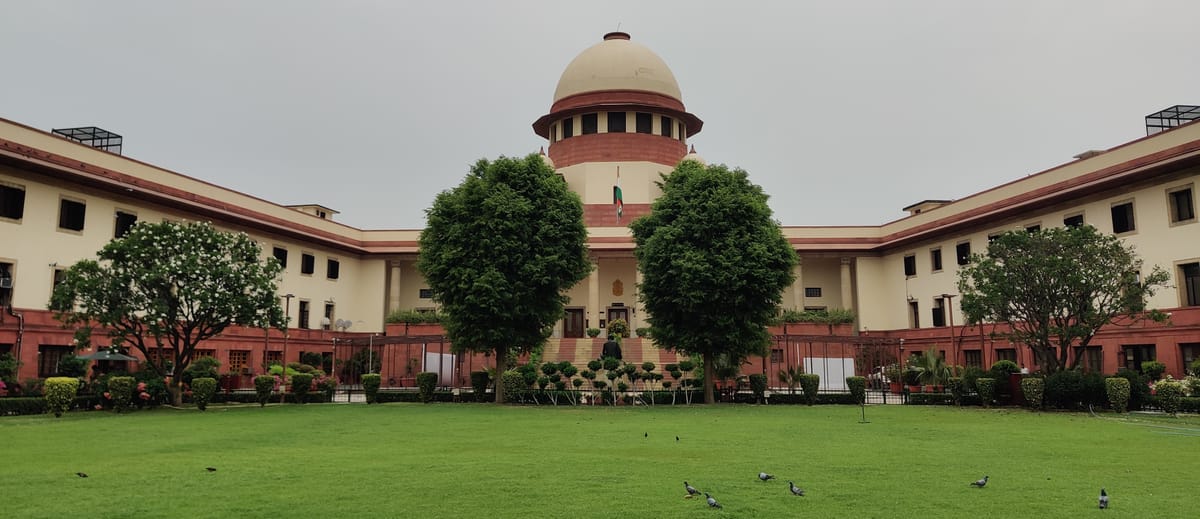Judicial Overreach: Governor’s Executive Powers Curbed by the Supreme Court

Author - Dharmendra D Jadhav, a practising advocate in the Bombay High Court.
Introduction
In 2023, the State of Tamil Nadu invoked the extraordinary original jurisdiction of the Supreme Court under Article 32 of the Constitution of India by filing a Writ Petition seeking a writ of mandamus to compel the Governor to grant assent to pending legislative Bills. While previous instances of similar impasses had occurred, wherein petitions were also instituted, the Supreme Court had historically refrained from encroaching upon the discretionary powers vested in the Executive. However, in the present matter, the Supreme Court has seemingly departed from its earlier reticence, exhibiting what could be characterized as judicial adventurism by intervening in the domain of the Executive.
Now, let us delve further to understand the rationale behind the provision for granting assent to Bills passed by the State Legislatures. The framers of the Constitution consciously and deliberately incorporated the phrase, “withholds the assent therefrom” in Article 200 of the Constitution for reasons as mentioned below:
- Under Article 1 of the Constitution, India is a Union of States and not a Federation, akin to the United States where the States have covenanted to form a federation. Consequently, the States possess the power to cede from the federation; while in India, the States cannot secede the Union, making the Union more powerful than the States; and
- Furthermore, a State is expected to align its actions with the national interest and would be viewed unfavourably for pursuing parochial or self-serving objectives, thus the installation of the Governor at the State, nominated by the Union. Although the Governor holds an independent Constitutional post, he is still required to “preserve, protect and defend the Constitution” against any misadventures by any State.
Let us understand the process of granting an assent
The assent of the Governor under Article 200 is sine qua non for a Bill to be enacted into law. When a Bill is passed by either or both the Houses of the Legislature, it is presented to the Governor for his assent, under Article 200, the Governor is empowered to exercise any of the four options —to give assent, withhold assent, return the Bill to the Legislative Assembly for reconsideration, or reserve it for the consideration of the President.
If the Governor elects to return the Bill to the Legislative Assembly for reconsideration, the Assembly is not obligated to accept these recommendations and can pass the Bill again in its original form. This time, the Governor is constitutionally bound to give assent to it. Further, the Governor can reserve a Bill for the President’s consideration if he is of the opinion that it would endanger the position of the concerned High Court by carving away its powers.
When the Governor withholds a Bill, and here it gets interesting, he need not return it to the Assembly for reconsideration. This alternative of returning the bill on withholding it, is a principle misconceived by the Supreme Court as, return for reconsideration is one of the four alternatives for the Governor. Upon the withholding the assent, the Bill is effectively dead i.e., it cannot become a law.
However, there is no timeline prescribed for Governors to make a decision with regard to a Bill. This loophole is often called a ‘pocket veto’.
Why is this judgement of the Supreme Court an overreach?
The judgement by the Division bench of the Supreme Court made the following seven grave and unpardonable judicial errors with long term political implications while deciding the case. They are as follows:
- The decision to give assent to the Bill falls within the discretionary powers of the Governor as specified under Article 163(2), which stipulates that “if any question arises whether any matter as respects which the Governor is by or under this Constitution required to act in his discretion, the decision of the Governor in his discretion shall be final…” In other words, the Clause (2) in this original and unamended form posits that the Governor has the discretion to determine the ambit of his discretion, and that his decision shall be final;
- Further, the Supreme Court in Purushothaman Nambudiri vs. State of Kerala (AIR 1962 SC 694), held that since there is no time limit prescribed under Article 200 for the Governor to give his assent, the Constitution framers did not intend for a Bill pending assent to be at risk of lapsing on dissolution of the House. Thus, affirming the Constitutional position that discretionary power of the Governor to decide cannot be meddled with;
- While the judgement is now applicable to all the State, the Supreme Court issued no notice to any of the States and not even to the President of India, to who it unilaterally held to assent the Bills passed by the Parliament, where such a question of law did not even arise. The States and even the President of India were directed, without having been heard and it violates the Principle of Natural Justice of, “Audi alteram partem”;
- The case involved a substantial question of law as to the interpretation of the Constitution and could not have been decided by a bench of less than five judges. The explicit mandate of Article 145(3), which says that a Constitution Bench of at least five judges must decide cases involving substantial questions of law; and if the Court passes orders affecting all States without issuing notice to them, then the Supreme Court cannot, in law, interpret the Constitution;
- The addition of a time limit to Article 200 is an exclusive domain of the Parliament under Article 368, and if the Supreme Court decides the same under the writ Jurisdiction or even under Article 142 amounts to a violation of the Principle of Separation of Powers;
- Further, the Constitution under Article 74, states that the President shall act on the aid and advice of the Council of Ministers, thus when a matter is referred to the Supreme Court under Article 143, such a reference could only be made by the President on the advice of the Council of Ministers. Therefore, when the Supreme Court in this case, directed that the President “ought” to seek the Court’s opinion, the Supreme Court effectively usurped the function of advising the President — circumventing the Council of Ministers and reducing Article 74 to a mere formality;
- Finally, the judgement running into 414 pages, may potentially embolden the State(s) which either do not align well with the Centre or the party governing the Union Government or with separatist agenda, may ignite the fire of secessionist movements, which the Article 1, when read with Government of NCT of Delhi V. Union of India & Anr. (Civil Appeal No. 2357 Of 2017), the Supreme Court clearly prohibits, as it observes that the State has no right to secede or claim sovereignty.
I believe that the Supreme Court's judgment in the State of Tamil Nadu vs. Governor of Tamil Nadu case represents more than just another instance of judicial overreach. It constitutes a daring effort by the judiciary to encroach upon the authority of the legislative and executive branches, all under the guise of "constitutional morality." However, the morality ought not to serve as a pretext for the judiciary to appropriate powers that rightfully belong to the other organs of State.
Read more about the legal news at LegalWiki.




